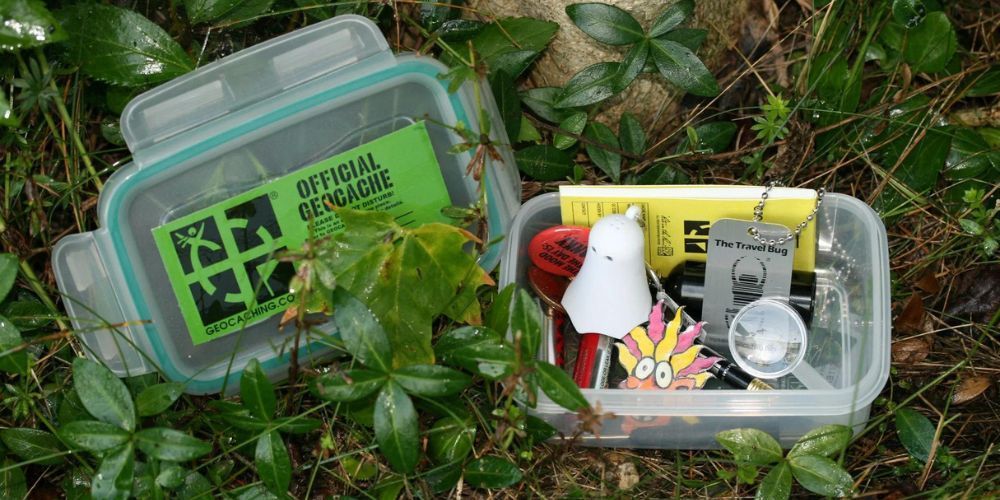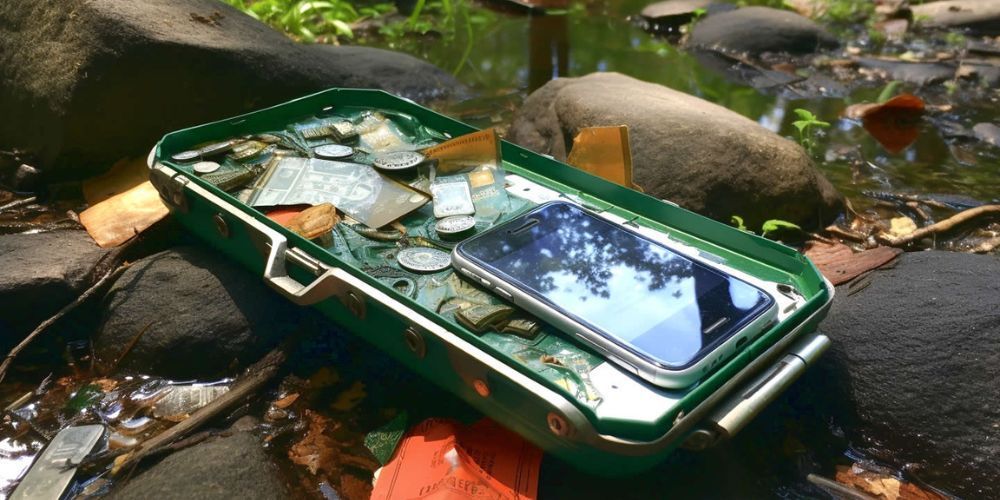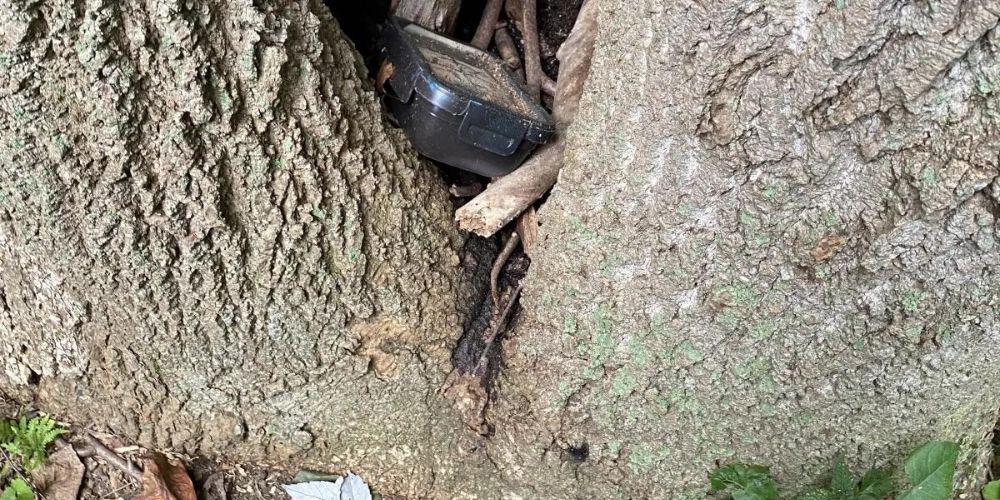How to Hide Your First Geocache: A Beginner's Guide to Geocaching
July 19, 2024
Every geocacher remembers their first hide—it’s a mix of excitement and apprehension as you hope your creation brings joy to others without causing unintended issues. As someone who loves outdoor adventures and puzzles, you're probably eager to get everything just right. The magic lies in making sure every detail counts so that fellow geocachers enjoy the hunt just as much as you enjoyed creating it.
Planning your first cache involves more than just hiding a box; it's about blending fun with responsibility. By carefully choosing a good location, you ensure not only accessibility but also respect for nature and private property. From navigating local guidelines to selecting a weather-resistant container that fits its surroundings, each step matters in crafting an unforgettable experience for all geocachers who follow in your footsteps.
To hide your first geocache, start by finding a unique location that others may enjoy, then choose a waterproof container and provide an empty logbook. Once you have everything prepared, use the Hide a Geocache page to submit your geocache for review and publication. Make sure to maintain it by periodically checking the cache site and monitoring logs once it's published.

Selecting the Right Location
The success of your geocache heavily depends on where you place it. Consider these factors when selecting a location for your geocache to ensure a positive and engaging experience for all participants.
Accessibility Is Key
When choosing the perfect spot for your geocache, think about how easy it is to get to. You want your geocache to be accessible, but not too easy to find. Public parks, hiking trails, and urban areas with historical significance are popular choices. Remember, not everyone who enjoys geocaching is an expert hiker or mountain climber, so be mindful of making the location too difficult to access.
Imagine you're planning a fun outing with friends or family, and part of the day includes finding a geocache. You'd want the location to be approachable for everyone in your group, regardless of age or physical ability. The goal is to provide a sense of adventure without causing frustration due to inaccessible or overly challenging terrain.
Respect for Property Rights
Remember always to respect property rights. Before you decide on a location, ensure it's on public land or obtain permission from private property owners if necessary. Unauthorized placements can lead to legal issues and the removal of your geocache. Always aim to be a responsible and respectful participant in the community by adhering to rules and guidelines.
"It's crucial always to remember that showing respect for the places where we hide our geocaches ensures the sustainability of this exciting activity for everyone involved."
Environmental Stewardship
Geocaching provides an opportunity to explore nature while enjoying the thrill of treasure hunting. It's essential to keep in mind that certain areas should be off-limits. Avoid environmentally sensitive places such as endangered plant species or wildlife habitats, as placing a geocache here could disrupt ecosystems and threaten local flora and fauna.
Imagine stumbling upon a rare wildflower or coming across a nesting area for local wildlife during a geocaching adventure. These surprising encounters add excitement to the experience but must be protected. By being mindful of where we place our geocaches, we ensure that these beautiful spaces remain undisturbed for future generations of explorers.
Now that we have explored the critical considerations when selecting a location for your first geocache, let's move on to understanding the different types of containers suitable for hiding your cache.
Choosing the Best Container
When it comes to geocaching, choosing the right container is crucial. It needs to be durable enough to withstand the elements and protect the logbook and any trinkets inside, while also being discreet enough not to reveal its position too easily.
Size and Durability
The first thing to consider is the size and durability of the container. Geocaches are placed in various outdoor locations, so it's essential that the container can handle whatever Mother Nature throws its way. It should be waterproof to keep its contents dry and able to withstand wind, rain, and snow. Common choices include plastic Tupperware, metal tins, or custom containers specifically designed for geocaching. The size of the container matters and can range from tiny nano caches to large ammo cans, depending on your chosen location. The larger the container, the more items it can hold, but it might be harder to conceal in certain locations.
For example, if you're hiding a geocache in a densely wooded area with lots of underbrush, a smaller container might be easier to camouflage and less likely to be stumbled upon by muggles (non-geocachers). On the other hand, if you're placing a cache in an urban setting with limited natural cover, a larger container may be suitable.
Visibility and Security
In addition to size and durability, visibility and security are also essential factors when selecting a geocache container. The container should not be transparent or see-through as this could make it too easy for non-geocachers to identify and disrupt it. A solid-colored or camouflaged container can help it blend into its surroundings.
Imagine placing a bright red plastic box in an urban area; it would likely stand out among its surroundings and attract unwanted attention. On the other hand, a dull-colored or camouflaged container would be less conspicuous and less likely to draw attention from passersby. Moreover, consider incorporating secure locking mechanisms on the container to deter tampering and protect the logbook and any trinkets inside.
In summary, choosing the right geocache container involves careful consideration of size, durability, visibility, and security. It's about finding the perfect balance between protecting the contents of the cache while still allowing geocachers to find it.
Now that you understand the crucial aspects of choosing the best geocache container, it's time to dive into preparing the cache site.

Preparing the Cache Site
Imagine this: You're about to embark on a treasure hunt. Where would you want to go? Somewhere clean and accessible, right? That's exactly what you need to create for others when you hide your geocache.
Clearing the area where the geocache will be hidden is crucial for the safety and convenience of those who will seek it. Removing debris, sharp objects like broken glass or metal, along with any hazardous materials, creates a safer environment for geocachers. You want searchers to have an enjoyable experience without any avoidable mishaps.
Furthermore, ensuring that the area around the cache is tidy and accessible makes it easier for people to get to the site without struggling through thick underbrush or bumping into obstacles.
For example, if your geocache is located in a public park, make sure there are no sharp objects or garbage lying around. If your cache is in the woods, clear away any fallen branches or rocks that could pose a trip hazard.
Marking GPS Coordinates
Once the area is cleared and safe, it's time to accurately mark the GPS coordinates of your cache site. This step is crucial because when someone uses their smartphone or dedicated GPS device to navigate to your geocache, it's vital they find it easily.
To record accurate coordinates, use a reliable GPS device—smartphones can work but are less precise. Take multiple readings over a short period to ensure accuracy. GPS signals can be affected by various factors such as weather or satellite positioning, so taking multiple readings helps ensure accuracy.
You'll want to revisit the location a few times over a day or two, especially if it's a spot where tree cover may interfere with signal reception. An accurate coordinate ensures that seekers find the actual cache and not some arbitrary location nearby.
Some might argue that using smartphones should suffice. However, dedicated GPS devices provide greater accuracy, especially in remote areas with weaker cell signals.
By clearing the area and marking accurate GPS coordinates, you are setting the stage for an exciting and safe treasure hunting experience for geocachers. It's all about crafting an adventure while keeping everyone's enjoyment and safety in mind.
Next, let's move on to exploring techniques for "Camouflaging Your Geocache," an essential skill in ensuring your hidden treasure remains undiscovered by muggles.
Camouflaging Your Geocache
So you've found the ideal location for your geocache and you're excited to share it with the world. But before doing so, proper concealment is essential. Camouflaging your geocache isn't just about hiding it; it's about enhancing the challenge and enjoyment for fellow geocachers. Using natural materials or custom camouflage techniques can make your cache an exciting discovery worth the effort.
Blending with Surroundings
When camouflaging your geocache, the goal is for it to seamlessly blend in with its environment. Incorporating natural materials like rocks, leaves, or branches can effectively conceal the container, making it appear as a part of the landscape. Custom camouflage tape or paint designed for outdoor use can also be utilized to integrate the container into its surroundings, adding to the challenge while preserving the area's natural beauty.
Consider the location where you plan to hide your cache; the type of vegetation, terrain, and overall aesthetic should guide your choice of camouflage materials. For instance, in a wooded area, using leaves, twigs, or bark would be effective for blending in with the surroundings. In a rocky terrain, utilizing small stones or pebbles could provide effective camouflage.
For example, when placing a geocache in a public park with trees and fallen leaves, covering the container with similar leaves and hiding it under a small pile of twigs can make it less conspicuous. Utilizing natural materials from the site itself allows seamless blending while maintaining the area's serenity for everyone to enjoy.
Keeping it Fun
While effective camouflage is important, ensuring that your geocache remains distinguishable from its surroundings is equally critical. A well-camouflaged cache should still have distinct elements that set it apart without being immediately obvious.
A well-camouflaged cache offers both a challenge and a rewarding find, allowing searchers to feel accomplished when they discover it while maintaining the thrill of the hunt.
Imagine finding a cleverly concealed cache in a forest where each discovery feels like an achievement rather than stumbling upon something obvious. This excitement embodies the captivating spirit of geocaching—a delightful mix of adventure and problem-solving.
By applying thoughtful camouflage techniques while keeping the spirit of exploration alive, you'll create an engaging experience for all those who seek out your hidden treasure.
Now let's turn our attention to determining the best time to hide your cache—aligning with nature to optimize its allure.

Best Time to Hide Your Cache
When it comes to hiding your geocache, timing can significantly impact its security, secrecy, and the overall experience for those who find it. Let's dive into a couple of key factors that should guide your decision-making process.
Consider Weather Conditions
One of the most crucial things to ponder when determining the right time to hide your cache is the weather. Opt for a dry, clear day, as this ensures that the ground is not too muddy or wet, making it easier for you to secure the cache in place without it being affected by moisture. This also minimizes potential damage and wear and tear, ensuring a better experience for future finders.
Avoid Busy Times
Another critical consideration is to avoid busy times when hiding your cache. Opting for off-peak hours such as early mornings or weekdays can help maintain the secrecy of your cache until it gets published on geocaching platforms. This reduces the likelihood of potential curious onlookers or muggles discovering your cache during the hiding process, increasing its chances of remaining undisturbed until it's ready to be discovered by eager geocachers.
For instance, consider hiding your geocache in a park or trail during the early hours of a weekday. The reduced foot traffic during these times allows you to carry out the hiding process discreetly and securely without unnecessary interference.
By carefully considering weather conditions and choosing off-peak hours, you can ensure that your geocache is hidden securely and maintains its secrecy until it's ready to be found by other geocachers.
Timing plays a crucial role in ensuring the successful concealment of your geocache. Now, let's explore the next step in creating an engaging geocaching experience—crafting clues and logs.
Creating Clues and Logs
The key to a great geocaching experience is well-crafted clues that lead to a memorable find. Your main goal is to be clever without making things too easy! The thrill of a treasure hunt lies in solving puzzles and following subtle hints. So, how do we create these captivating clues?
First and foremost, you want to provide clear hints that spur curiosity and challenge the geocachers' problem-solving skills. You might want to think of it as writing a friendly riddle. A successful clue should serve as a guide but doesn't give away the location right off the bat. It should prompt the seekers to explore and think critically while being enjoyable for all skill levels.
It's crucial not to make the clue too difficult or too simple; finding the right balance is an art! Consider including local history or interesting tidbits about the area into your clue, adding an educational element to the adventure for finders. For instance, if your geocache is hidden near a historic bridge, your clue could incorporate its construction date or some unique feature of the architecture. This aligns perfectly with the spirit of geocaching - encouraging individuals to explore new places while honoring local landmarks.
Once your seekers have cracked the code and discovered your well-concealed cache, they'll want to log their triumph. This is where maintaining the logbook comes into play.
Your logbook may just be a small part of your cache, but it's an incredibly significant one. It provides finders with space to document their visit, share experiences, and connect with other geocachers who have found the same treasure in their journey.
Given this, you'll need to ensure that your logbook stays safe and dry. As such, it's imperative to use a waterproof logbook, especially if you're placing a cache outdoors. Size is also a factor - you'll want it to fit comfortably inside the container but sturdy enough to handle regular handling during finds.
- Spiral-bound notebooks: Durable and compact
- Waterproof paper: Resilient against moisture
- Converted film canisters: Compact and creatively repurposed
By crafting engaging clues and maintaining a reliable logbook within your cache, you'll ensure that each finder has an exciting and fulfilling geocaching experience while safeguarding its integrity against natural elements.
Creating clues and maintaining a logbook represent just a few pieces of the intricate puzzle that is geocache hiding. Each element contributes to an enticing experience for those seeking hidden treasures in the world around them.
What is geocaching and how does it work?
Geocaching is an outdoor recreational activity where participants use GPS devices or smartphones to hide and seek containers, called “geocaches” or “caches,” at specific locations marked by coordinates all over the world. The basic idea is to find hidden containers and then log your discoveries online. Geocaches come in various sizes and shapes, from tiny magnetic caches to large boxes. Each geocache usually contains a logbook for finders to sign, and some may include small trinkets for trading. To start, you’ll need to create a free account on a geocaching website or app, choose a cache to search for, and then use your GPS device to navigate to its location. Once you find it, you sign the logbook and log your find online.
How do I choose a good location to hide my first geocache?
Choosing a good location for your first geocache is crucial for ensuring it is both enjoyable to find and respectful of the environment and community. Start by selecting a spot that is accessible to the public and safe to visit. Avoid private property unless you have explicit permission from the owner. Consider areas that offer interesting scenery, historical significance, or unique challenges. It’s important to make sure the location complies with local laws and geocaching guidelines, such as avoiding protected natural areas. Think about the difficulty level; a good beginner cache should be relatively easy to find. Make sure to hide your cache in a way that it blends with the surroundings but is not too difficult to spot once the seeker is close.
What are the essential items to include in my geocache?
When preparing to hide your first geocache, you’ll need a few essential items. Start with a waterproof container that can withstand the elements and protect the contents. The size of the container will depend on your chosen hiding spot and the type of cache you want to create. Inside, include a logbook and a pen or pencil so finders can log their visits. Some geocachers like to include small tradeable items, often referred to as “swag,” such as toys, trinkets, or collectibles. Make sure these items are family-friendly and appropriate for all ages. It’s also a good idea to include a note explaining what geocaching is for those who might stumble upon the cache by accident. This note can help prevent the cache from being mistakenly discarded. Finally, ensure all items are securely packed and the container is well-sealed to prevent water damage.
Check out the latest guides on geocaching gear
Author: William Flaiz










